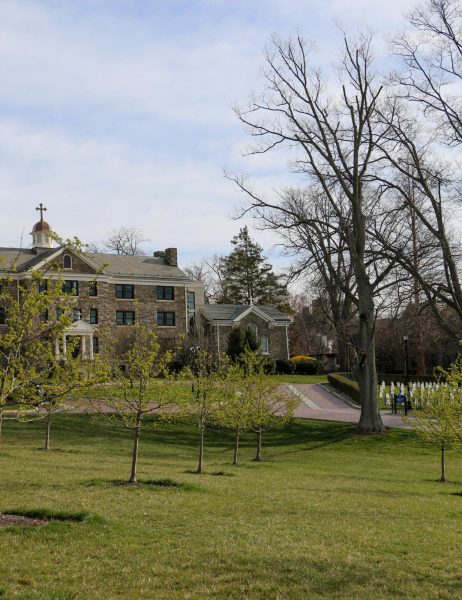The Downsides of the University’s Tuition Increase
March 24, 2022
“FY 2023 Budget,” detailing a 4.25% tuition increase, was introduced to the Villanova community on March 7, 2022 in an email from University President Rev. Peter M. Donohue, O.S.A., Ph.D..
With this being true, our cost of education is set to surpass $80,000, a painfully high ceiling that private universities seem increasingly daring to cross.
Why, though, is the $77,705 we shell out to this University each year not enough? What necessitates this increase? As I hear the same question frequently repeated by students: where is our money going, and now, where will even more of it go?
Having been a part of the Villanova community for two years now, the issues with building conditions, understaffing and functioning facilities (I could go on) are plain and pervasive.
Indeed, the fact that a payout of around $77,705 from an undergraduate student body of 6,812 people is not enough to address these structural and practical problems is troubling.
Falling well within the category of medium-sized colleges, Villanova has both a campus and student body size comparable to institutions such as Lehigh University, whose tuition stands at $75,820–– a pretty penny, though, still less than our current cost of attendance.
Why, then, do certain colleges and universities like ours require so much more?
In his message, Fr. Peter asserts that the goal of the tuition increase is to reflect current inflation of the economy, as well as “significant continued investment in the Strategic Plan, as well as programmatic initiatives.” Practically, though, what exactly does this mean?
One of the most glaring issues with the announcements is a lack of clarity. Given the sheer amount of money involved, there should be greater specification of what the “Strategic Plan” and these “programmatic initiatives” are, as well as greater specification as to how our money will contribute to these policies.
In asking multiple Villanova students about their understanding of what these initiatives truly are, no one could provide an answer. Furthermore, some of these students were even unaware of the tuition increase as a whole.
This speaks volumes, highlighting another issue that comes hand in hand with this 4.25% tuition increase: transparency.
The announcement of the new FY 2023 budget lied tucked away behind updates and announcements regarding Black History Month and Women’s History Month on campus as well as the newly-renamed Hovnanian Hall.
A tuition increase, especially one that bumps our current cost of attendance beyond $80,000, is no small matter. Thus, to give an affair of this weight such little attention, grouped between other announcements is surprising and slightly alarming.
The cost of tuition has a direct effect on the ability of students to continue to attend this University. How can students accurately assess the financial stake this increase will take if they are not even aware of it?
Many other colleges and universities have similarly reported an increase in tuition cost to reflect rising interest rates.
However, unlike Villanova, other institutions appeared to dedicate more time and effort to providing their student body with explicit reasoning behind these endeavors.
Georgetown University, for instance, devoted a complete letter to their tuition increase, incorporating a graphic, as well as links for students to acquire further information on this matter.
Villanova, then, clearly did not dedicate the same attention to student awareness and understanding of this issue as that of other schools.
The new FY 2023 Budget will, undoubtedly, bring more money to help address many structural and practical issues on campus.
Ultimately, I can only hope that greater attention will be given to clarifying both the goal and implementation of these programs, actively keeping us, the Villanova community, in the loop.







